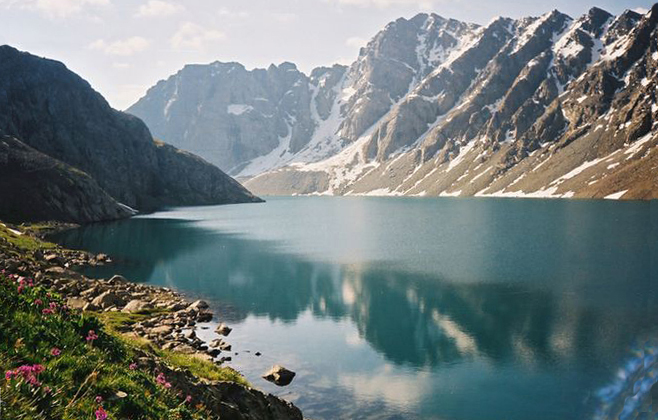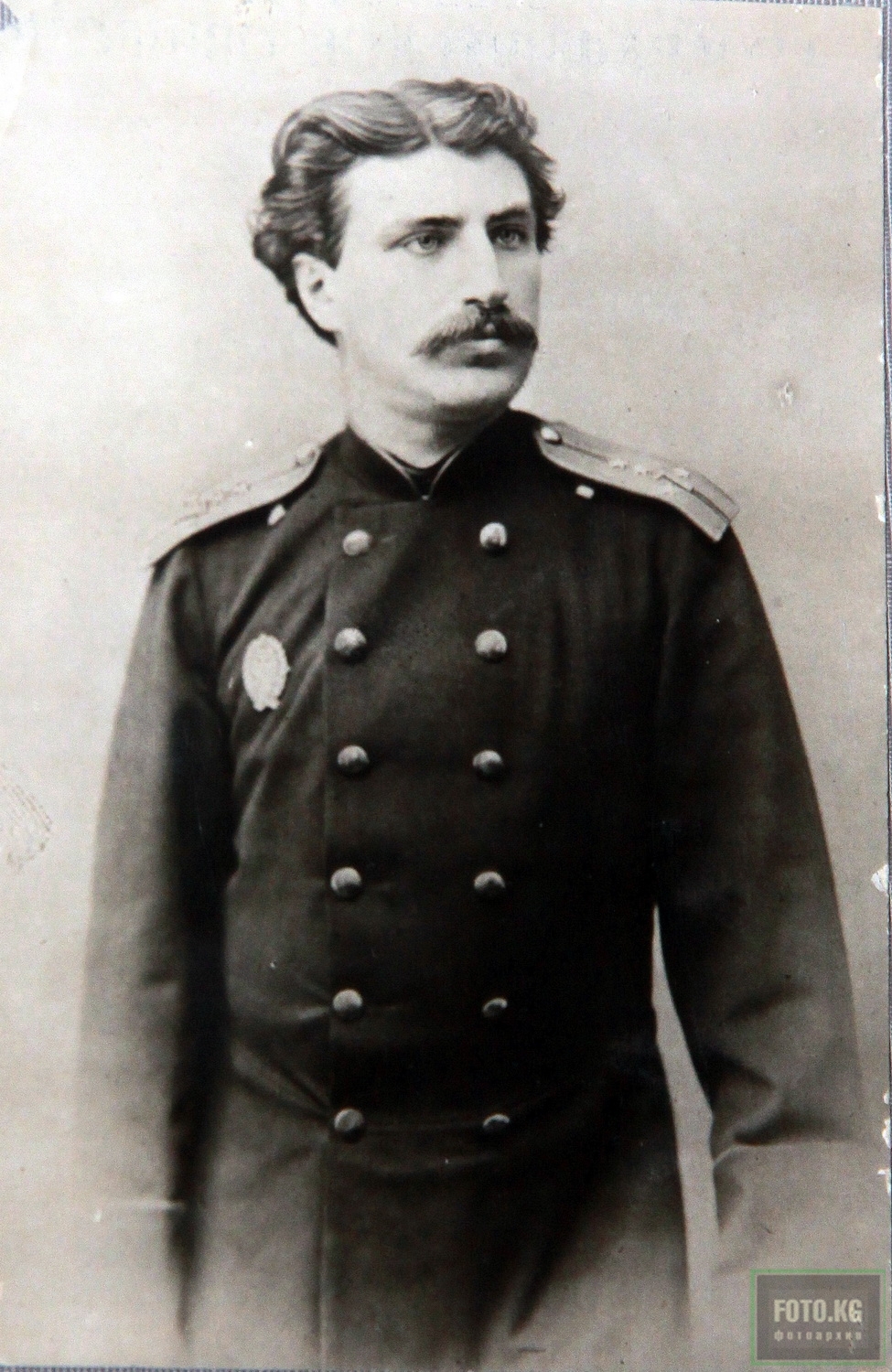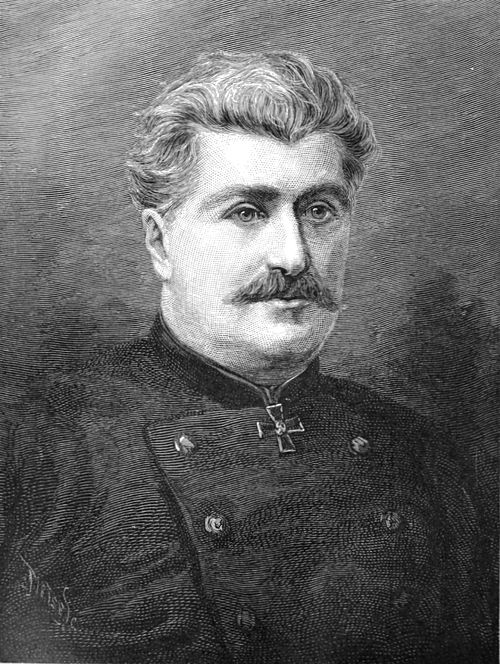|
Karakol National Park
Karakol ( ky, Каракол, Karakol, قاراقول, ; zh, 卡拉科尔), formerly Przhevalsk (russian: Пржевальск), is the fourth-largest city in Kyrgyzstan, near the eastern tip of Lake Issyk-Kul, about from the Kyrgyzstan–China border and from the capital Bishkek. It is the administrative capital of Issyk-Kul Region. Its area is , and its resident population was 84,351 in 2021 (both including Pristan'-Przheval'sk). To the north, on highway A363, is Tüp, and to the southwest Jeti-Ögüz resort. History A Russian military outpost founded on 1 July 1869, Karakol grew in the 19th century after explorers came to map the peaks and valleys separating Kyrgyzstan from China. In the 1880s Karakol's population surged with an influx of Dungans, Chinese Muslims fleeing warfare in China. In 1888, the Russian explorer Nicholay Przhevalsky died in Karakol of typhoid, while preparing for an expedition to Tibet; the city was renamed Przhevalsk in his honor. After local p ... [...More Info...] [...Related Items...] OR: [Wikipedia] [Google] [Baidu] |
List Of Sovereign States
The following is a list providing an overview of sovereign states around the world with information on their status and recognition of their sovereignty. The 206 listed states can be divided into three categories based on membership within the United Nations System: 193 UN member states, 2 UN General Assembly non-member observer states, and 11 other states. The ''sovereignty dispute'' column indicates states having undisputed sovereignty (188 states, of which there are 187 UN member states and 1 UN General Assembly non-member observer state), states having disputed sovereignty (16 states, of which there are 6 UN member states, 1 UN General Assembly non-member observer state, and 9 de facto states), and states having a special political status (2 states, both in free association with New Zealand). Compiling a list such as this can be a complicated and controversial process, as there is no definition that is binding on all the members of the community of nations concerni ... [...More Info...] [...Related Items...] OR: [Wikipedia] [Google] [Baidu] |
Uyghurs
The Uyghurs; ; ; ; zh, s=, t=, p=Wéiwú'ěr, IPA: ( ), alternatively spelled Uighurs, Uygurs or Uigurs, are a Turkic ethnic group originating from and culturally affiliated with the general region of Central and East Asia. The Uyghurs are recognized as native to the Xinjiang Uyghur Autonomous Region in Northwest China. They are one of China's 55 officially recognized ethnic minorities. The Uyghurs are recognized by the Chinese government as a regional minority and the titular people of Xinjiang. The Uyghurs have traditionally inhabited a series of oases scattered across the Taklamakan Desert within the Tarim Basin. These oases have historically existed as independent states or were controlled by many civilizations including China, the Mongols, the Tibetans and various Turkic polities. The Uyghurs gradually started to become Islamized in the 10th century and most Uyghurs identified as Muslims by the 16th century. Islam has since played an important role in Uyghur ... [...More Info...] [...Related Items...] OR: [Wikipedia] [Google] [Baidu] |
Altyn Arashan
Altyn Arashan (Golden Spa) is a valley and mountain resort near Karakol and Issyk Kul Lake, northeastern Kyrgyzstan. It lies along the trekking route from Teploklyuchenka Teploklyuchenka (russian: Теплоключенка, ky, Теплоключенка, also Ак-Суу - ''Ak-Suu'') is a large village in the Issyk-Kul Region of Kyrgyzstan with population of 14,009 in 2021. It is the administrative center of th ... (Ak-Suu). It is a hot spring development set in an alpine valley, containing the 5020 metre Pik Palatka in its southern part. It is said to "include three groups of nitric thermals springs on the right side of the Arashan River, 20 km southeast of Karakol mountain, situated in a picturesque forest landscape at an altitude of 2350-2435 metres." The resort has numerous wooden sheds which contain hot sulfurous pools to cure various ailments. The resort is set in a botanical research area called the Arashan State Nature Reserve which has about 20 snow leopards and sev ... [...More Info...] [...Related Items...] OR: [Wikipedia] [Google] [Baidu] |
Przewalski's Horse
Przewalski's horse (, , (Пржевальский ), ) (''Equus ferus przewalskii'' or ''Equus przewalskii''), also called the takhi, Mongolian wild horse or Dzungarian horse, is a rare and endangered horse originally native to the steppes of Central Asia. It is named after the Russian geographer and explorer Nikolay Przhevalsky. Once extinct in the wild, it has been reintroduced to its native habitat since the 1990s in Mongolia at the Khustain Nuruu National Park, Takhin Tal Nature Reserve, and Khomiin Tal, as well as several other locales in Central Asia and Eastern Europe. Several genetic characteristics of Przewalski's horse differ from what is seen in modern domestic horses, indicating neither is an ancestor of the other. For example, the Przewalski has 33 chromosome pairs, compared to 32 for the domestic horse. Their ancestral lineages split from a common ancestor between 38,000 and 160,000 years ago, long before the domestication of the horse. Przewalski's horse was long ... [...More Info...] [...Related Items...] OR: [Wikipedia] [Google] [Baidu] |
Nikolay Przhevalsky
Nikolay Mikhaylovich Przhevalsky (or Prjevalsky;; pl, Nikołaj Przewalski, . – ) was a Russian geographer of Polish descent (he was born in a Polish noble family), and a renowned explorer of Central and East Asia. Although he never reached his ultimate goal, the holy city of Lhasa in Tibet, he traveled through regions then unknown to the West, such as northern Tibet (modern Tibet Autonomous Region), Amdo (now Qinghai) and Dzungaria (now northern Xinjiang). He contributed substantially to European knowledge of Central Asian geography. He also described several species previously unknown to European science: Przewalski's horse, Przewalski's gazelle, and the wild Bactrian camel, all of which are now endangered. He was a mentor of his follower Pyotr Kozlov. Biography Przhevalsky was born in Kimborovo, in the Smolensky Uyezd of the Smolensk Governorate of the Russian Empire in the Polish noble family. He studied there and at the military academy in St. Petersburg. In ... [...More Info...] [...Related Items...] OR: [Wikipedia] [Google] [Baidu] |
Przhevalsky Museum
Nikolay Mikhaylovich Przhevalsky (or Prjevalsky;; pl, Nikołaj Przewalski, . – ) was a Russian geographer of Polish descent (he was born in a Polish noble family), and a renowned List of explorers, explorer of Central Asia, Central and East Asia. Although he never reached his ultimate goal, the holy city of Lhasa in Tibet under Qing rule, Tibet, he traveled through regions then unknown to the West, such as northern Tibet (modern Tibet Autonomous Region), Amdo (now Qinghai) and Dzungaria (now northern Xinjiang). He contributed substantially to European knowledge of Central Asian geography. He also described several species previously unknown to European science: Przewalski's horse, Przewalski's gazelle, and the wild Bactrian camel, all of which are now endangered species, endangered. He was a mentor of his follower Pyotr Kozlov. Biography Przhevalsky was born in Pochinkovsky District, Smolensk Oblast, Kimborovo, in the Smolensky Uyezd of the Smolensk Governorate of the Ru ... [...More Info...] [...Related Items...] OR: [Wikipedia] [Google] [Baidu] |
Shymbulak
Shymbulak ( kk, Şymbūlaq, cyrl, ''Шымбұлақ''), also known as Chimbulak (russian: Чимбулак, ky, Чымбулак) is a ski resort near Almaty. It is the largest ski resort in Central Asia. It is located in the upper part of the Medeu Valley in the Zailiisky Alatau mountain range, at an elevation of above sea level. The resort area is about south of Almaty city by Medeo road. It is popular for its mild climate, large quantity of sunny days and great amount of snow through the winter (from November till May). History Shymbulak (also known as "Chimbulak") was discovered by amateur skiers in the 1940s. Soon after, it became the first downhill route in the Soviet Union. Skiers originally needed to climb up the mountain tops on foot (which took roughly 3 hours). In 1954 a 1500 meters ski tow was built. Starting from 1961, Shymbulak hosted several USSR Championships and the Silver Edelweisse prize skiing competitions. In 1983 it became the Olympic ski training c ... [...More Info...] [...Related Items...] OR: [Wikipedia] [Google] [Baidu] |
Tian Shan
The Tian Shan,, , otk, 𐰴𐰣 𐱅𐰭𐰼𐰃, , tr, Tanrı Dağı, mn, Тэнгэр уул, , ug, تەڭرىتاغ, , , kk, Тәңіртауы / Алатау, , , ky, Теңир-Тоо / Ала-Тоо, , , uz, Tyan-Shan / Tangritog‘, , also known as the Tengri Tagh or Tengir-Too, meaning the ''Mountains of Heaven'' or the ''Heavenly Mountain'', is a large system of mountain ranges located in Central Asia. The highest peak in the Tian Shan is Jengish Chokusu, at high. Its lowest point is the Turpan Depression, which is below sea level. One of the earliest historical references to these mountains may be related to the Xiongnu word ''Qilian'' ( zh, s=祁连, t=祁連, first=t, p=Qílián) – according to Tang commentator Yan Shigu, ''Qilian'' is the Xiongnu word for sky or heaven. Sima Qian in the ''Records of the Grand Historian'' mentioned ''Qilian'' in relation to the homeland of the Yuezhi and the term is believed to refer to the Tian Shan rather than the Qilia ... [...More Info...] [...Related Items...] OR: [Wikipedia] [Google] [Baidu] |
Karakol Gorge
Karakol ( ky, Каракол, Karakol, قاراقول, ; zh, 卡拉科尔), formerly Przhevalsk (russian: Пржевальск), is the fourth-largest city in Kyrgyzstan, near the eastern tip of Lake Issyk-Kul, about from the Kyrgyzstan–China border and from the capital Bishkek. It is the administrative capital of Issyk-Kul Region. Its area is , and its resident population was 84,351 in 2021 (both including Pristan'-Przheval'sk). To the north, on highway A363, is Tüp, and to the southwest Jeti-Ögüz resort. History A Russian military outpost founded on 1 July 1869, Karakol grew in the 19th century after explorers came to map the peaks and valleys separating Kyrgyzstan from China. In the 1880s Karakol's population surged with an influx of Dungans, Chinese Muslims fleeing warfare in China. In 1888, the Russian explorer Nicholay Przhevalsky died in Karakol of typhoid, while preparing for an expedition to Tibet; the city was renamed Przhevalsk in his honor. After local p ... [...More Info...] [...Related Items...] OR: [Wikipedia] [Google] [Baidu] |








